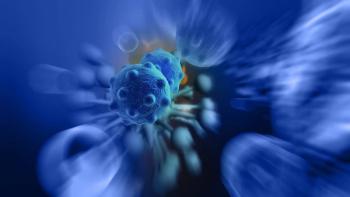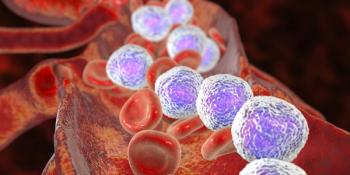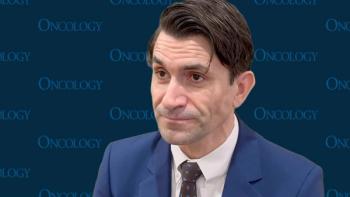
- ONCOLOGY Vol 22 No 14
- Volume 22
- Issue 14
Fostamatinib Is Well-Tolerated and Has Significant Clinical Activity in Diffuse Large B-Cell Lymphoma and Chronic Lymphocytic Leukemia
Results of the first clinical study examining the use of fostamatinib disodium, an investigational treatment that targets a protein called SYK (spleen tyrosine kinase), showed that the new agent represents a safe and novel therapeutic approach that should be further developed for the treatment of B-cell non-Hodgkin lymphoma.
Results of the first clinical study examining the use of fostamatinib disodium, an investigational treatment that targets a protein called SYK (spleen tyrosine kinase), showed that the new agent represents a safe and novel therapeutic approach that should be further developed for the treatment of B-cell non-Hodgkin lymphoma. In the study, fostamatinib, administered as a tablet, produced significant responses in patients who had failed previous treatments for diffuse large B-cell lymphoma, chronic lymphocytic leukemia, and small lymphocytic lymphoma, as well as prolonged stable disease in patients with follicular lymphoma, reported Jonathan W. Friedberg, md, James P. Wilmot Cancer Center, Rochester, NY, at the ASH meeting (abstract 3).
Three Patient Groups
Following a phase I dose-limiting study of 13 patients, the regimen of a 200 mg twice-daily dose of fostamatinib disodium was chosen for further evaluation in a phase II study conducted with 68 patients with relapsed or refractory B-cell non-Hodgkin lymphoma. The patients were divided into three groups: those with diffuse large B-cell lymphoma (23 patients), those with follicular lymphoma (21 patients), and those with other B-cell non-Hodgkin lymphomas (24 patients), including chronic lymphocytic leukemia/small lymphocytic lymphoma (11 patients), mantle cell lymphoma (nine patients), MALT lymphoma (three patients), and lymphoplasmacytic non-Hodgkin lymphoma (one patient). Patients previously received an average of five therapies, and many had previously received an autologous stem cell transplant or radioimmunotherapy.
The study found that fostamatinib disodium produced complete or partial responses in 21% of patients with diffuse large B-cell lymphoma, 54% of patients with chronic lymphocytic leukemia/small lymphocytic lymphoma, 11% of mantle cell lymphoma patients, and 10% of those with follicular lymphoma. Stable disease was also seen in an additional 23 patients, including 12 with follicular lymphoma, four with diffuse large B-cell lymphoma, four with mantle cell lymphoma, two with chronic lymphocytic leukemia/small lymphocytic lymphoma, and one with MALT lymphoma. A proportion of these responses was prolonged, with some patients remaining on therapy for more than 1 year. Given the refractory nature of these patients’ lymphoma, the toxicity profile was quite favorable.
There were four cases of febrile neutropenia, with eight patients requiring a dose-modification due to neutropenia, hypertension, liver function test abnormalities, fever, and mucositis.
Articles in this issue
about 17 years ago
The Absent-Minded Professor: An Unusual Complication of Melanomaabout 17 years ago
Inflammatory Breast Cancer: A Complex Diseaseabout 17 years ago
Defining the IBC Phenotypeabout 17 years ago
Acupunctureabout 17 years ago
Two Orphan Drug Designations Granted for Reviroc in NHLabout 17 years ago
NDA Submitted for Trabectedin to Treat Relapsed Ovarian Cancerabout 17 years ago
FDA Considers Update for Tanning Bed Labelsabout 17 years ago
FDA Approves New Imaging System to Enhance Cervical Cancer DetectionNewsletter
Stay up to date on recent advances in the multidisciplinary approach to cancer.





















































































